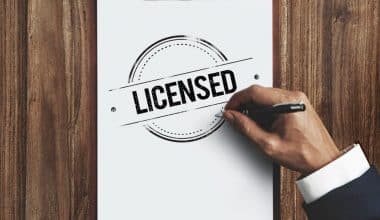When you experience an event that is covered under insurance, you submit a claim to the insurance company for reimbursement. The insurance company then goes through a process called claims adjudication to decide whether or not to cover the entire claim.
Claims are an intricate and complicated process deemed a prerequisite in seeking compensation. There are a lot of different parts to it that help adjudicators come to a decision. Many believe that it is difficult to follow and understand. This much is true.
However, it pays to know the varying stages and how the payments are processed and reimbursed when the claims adjudication is approved.
What is claims adjudication?
An adjudication is a legal ruling or judgment, usually final, but can also refer to the process of settling a legal case or claim through the court or justice system, such as a decree in the bankruptcy process between the defendant and the creditors.
Normally, an adjudication represents the final judgment or pronouncement in a case that will determine the course of action taken regarding the issue presented. Outside of a legal process, adjudication can also more generally refer to other formal processes of judgment or ruling that render a final decision, such as the process of validating an insurance claim.
Understanding how adjudication works
Adjudication describes the legal process that helps expedite and deliver a court’s resolution regarding an issue between two parties. The result of the process is a judgment and court opinion that is legally binding. Most adjudication hearings center on disputes that involve money or nonviolent infractions and result in the distribution of rights and obligations for all parties involved.
This legal process differs from other justice-seeking or evidence-based court cases. It is instead used to settle disputes between private parties, political officials and a private party, and public bodies and public officials. In the healthcare industry, for example, adjudication can determine a carrier’s liability for monetary claims submitted by an insured person.
The adjudication process
Formal rules of evidence and procedure govern the process where the initiating party, or trier, gives a notice establishing the facts in controversy and defines any applicable laws. The notice also sometimes outlines the nature of the dispute between the parties and recounts where and when the dispute occurred, and the desired result based on law. However, there are no specific requirements regarding the notice of adjudication.
An adjudicator is then appointed and a notice is sent to the defending party, who responds by submitting a defense to the claim of adjudication by the plaintiff. The adjudicator gives the plaintiff and defendant a chance to present their arguments at a hearing and makes a final ruling. This is not too dissimilar from an arbitrator in an arbitration hearing settling a business dispute.
Adjudication disputes
The types of disputes handled or resolved through adjudication include the following:
- Disagreements between private parties, such as single-persons, individual entities, or corporations
- Disagreements between private parties and public officials
- Disagreements between public officials and/or public bodies
Requirements for full adjudication include requisite notice to all interested parties (all legally interested parties or those with a legal right affected by the disagreements) and an opportunity for all parties to have their evidence and arguments heard.
Adjudication vs. Arbitration
Adjudication specifically refers to the process and decision issued by a government-appointed (or elected) judge, as opposed to a decision issued by an arbitrator in a private proceeding or arbitration. While both judges and arbitrators are expected and required to follow the law, judges’ adjudications also must take into account the interests of the government and the general public interest.
Arbitration, meanwhile, only needs to consider the interests of the parties involved.
The step-by-step process of claims adjudication
Simply put, claims adjudication is a process in which an insurance company decides whether to approve or reject a claim. One of the most complex parts of the medical claim is how and on what grounds they are adjudicated and the different stages to get there.
There needs to be a fair and just system of settling disputes and this is where the following steps come in:
Claim submission
Claims adjudication typically starts with a healthcare provider, such as hospitals, physicians, and laboratories submitting claims to an insurance company. Once the insurance company receives the claim, an initial review will be conducted to check if the patient information and the physician and its National Provider Identifier (NPI) matches or is valid.
In some cases, claims can be rejected due to an incorrect patient name, service code and date, diagnosis code, and health plan number. However, it can be rectified and resubmitted for payment.
Claim review
Claims are subjected to two levels of review: automatic and manual. During the automatic review, claimants search for more specific items in the claims that pertain to the payment policies of the insurance payers. Following that, an electronic claim will be submitted to a medical review desk to start the manual medical review.
A licensed nurse will review the claim’s information.
Prior claims and the patient’s health insurance policy will be reviewed to ensure the procedure is medically necessary and appropriate.
Claim review has two steps:
Automatic review
The insurer performs a more detailed scan of the claim through their computer system. For a medical claim, they check to see if the healthcare service requires prior authorization and if it was a medically appropriate and cost-effective treatment for the patient’s condition. Most claims are straightforward enough to adjudicate primarily at this stage.
There are a few common issues that come up during automatic review. If the service requires prior authorization, the claim will need to include the prior authorization number, and the diagnosis and procedure codes in the claim need to match with the codes submitted for pre-authorization.
Also, insurance companies usually have a 90-day or 120-day deadline for submitting claims, so the automatic review system will deny claims that have missed this deadline.
Manual review
Around 80% of claims are simple enough that either an automatic review or a quick scan by a human reviewer can quickly resolve them. The remaining 20% of claims are those that are especially complex and expensive. These pass on to a claims examiner for a detailed manual review.
During the manual review, the claims examiner will go through the claim in detail. They may request additional documentation, like medical records, to make sure that the services are appropriate for the claimant’s situation. This is especially common when a healthcare practice performs a new or unlisted procedure that doesn’t have an established billing code.
Since there’s no algorithm to determine when the new service is the appropriate form of care, a provider needs to look at the case in more detail.
Decision
Once the automated system, a human reviewer, or both have reviewed the claim, the insurance company will decide on payment. Ideally, the insurer will agree to pay the claim in full.
Sometimes, though, the insurer will pay a reduced rate. This happens when the payer determines that the amount billed was too high for the patient’s diagnosis, so the company approves a lower-level, less expensive procedure code for payment instead of denying the claim entirely.
The insurance company may also deny the claim. This can happen for several reasons, ranging from lapses in coverage to your practice’s being out of network. In the claims adjudication process, denial is different from rejection. Claims are usually rejected in the initial processing stage because of errors or typos. When this happens, billing staff can simply correct the mistake and resubmit the claim.
On the other hand, claims are denied at the end of the process, and appealing a denied claim can be more complicated.
Payment processing
The payment processing stage is where the insurance companies decide to pay or reduce the claim. When a claim is considered paid, the payer assesses whether or not the claim should be reimbursed, and can reduce the claim if the service level billed is excessive in light of the diagnosis.
The procedure code might be downcoded to a lower level deemed suitable by the claims examiner. However, payers can also decide to deny a claim, depending on the details, when the claim is not reimbursable.
EOB and EOP generation
When a claim is approved, the patient will receive an explanation of benefits (EOB) and remittance advice, otherwise known as an explanation of payment (EOP) for providers. It details the information on the notice of and explanations for benefits and payments, reductions in payments, adjustments, denials, and/or uncovered charges associated with a medical claim.
Claims adjudication: Appealing a denied claim
A denied claim means your practice’s payment will be either delayed or lost entirely. Appealing the decision can help the practice get paid for the services it’s already provided, but this can be complicated and time-consuming. If a claim is denied because of a clerical error, problem with prior authorization or question about whether the patient was covered at the time of service, appealing the decision should be fairly straightforward.
You’ll usually be able to submit corrected or additional information to resolve the problem.
Appeals become much more involved when the insurance company says that a procedure was not medically necessary. When this happens, the healthcare provider will usually need to participate in the appeals process as well. There are three levels of the appeals process.
First level
In an initial appeal, the healthcare practice contacts the payer to argue that the service met the payer’s rules and should be approved. A doctor from your practice can speak to a medical reviewer to conduct a peer-to-peer insurance review. This is usually a phone conversation where the provider has the opportunity to explain the details of the patient’s case, any relevant research data, and other reasons the treatment was medically necessary.
Second level
If the first-level appeal is denied, you’ll need to make the case that the procedure fell within the payer’s guidelines. At a second-level review, a medical director at the insurance company who hasn’t seen the claim before will review it.
External review
The final appeal opportunity is an external review, during which a doctor or another provider who doesn’t work for the insurance company reviews the claim. External reviews are only available for denials that are based on medical necessity or questions about whether a service is experimental or not.
Appealing the adjudication of a claim can require a significant time investment from both providers and billing staff. Sometimes the patient drives the process. Otherwise, your practice will need to decide whether appealing a claim is a good use of its time. This can be a nuanced, case-by-case decision.
Appealing a recurring service or one that’s especially expensive to provide could be worth the time that staff devotes to the appeal, while it may be more efficient to move on from smaller denials.
How to avoid denied claims
To avoid denied claims and the costs and frustrations they can cause, pay attention to areas where mistakes tend to happen before you submit a claim. The simplest mistakes are the most common. Relatively small errors like a misspelled patient name or incorrect diagnosis code can cause a claim to be denied. If a practice accidentally submits two claims for the same service, one or both will be denied as a duplicate.
When a payer doesn’t cover a particular service, no number of appeals will change the outcome.
Using a medical billing clearinghouse can also simplify the claims adjudication process.
Recommended Articles
- Effective Tips & Scripts for Insurance Cold Calling
- AAA Insurance Claims: Step By Step Process
- Travelers Insurance Claims: Understanding The Claims Process
- Insurance Points: What Are They & How Do They Work?
- Why Do Insurance Claims Take Long To Settle? All To Know
- How Long Does Insurance Claim Take To Settle?






